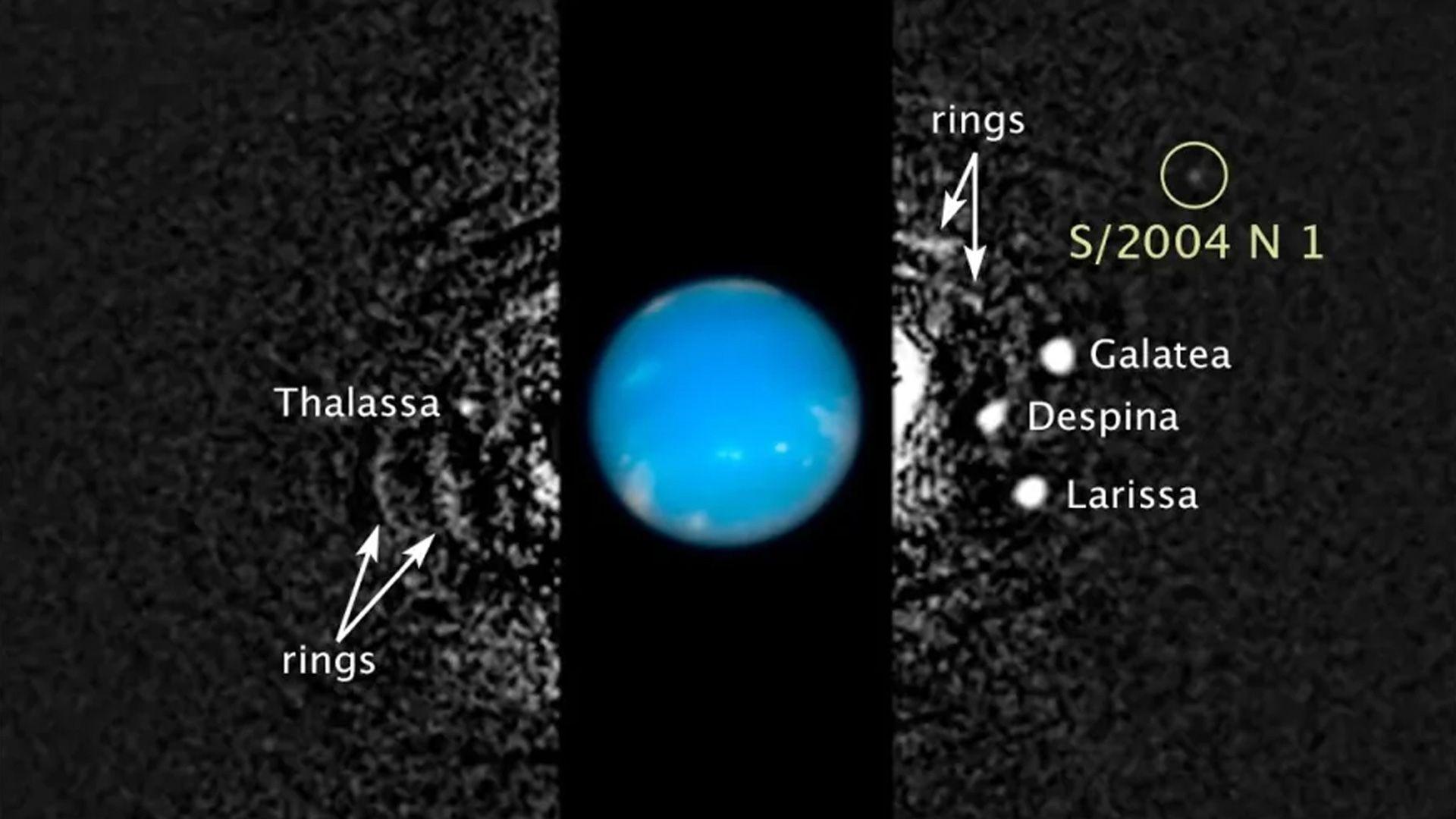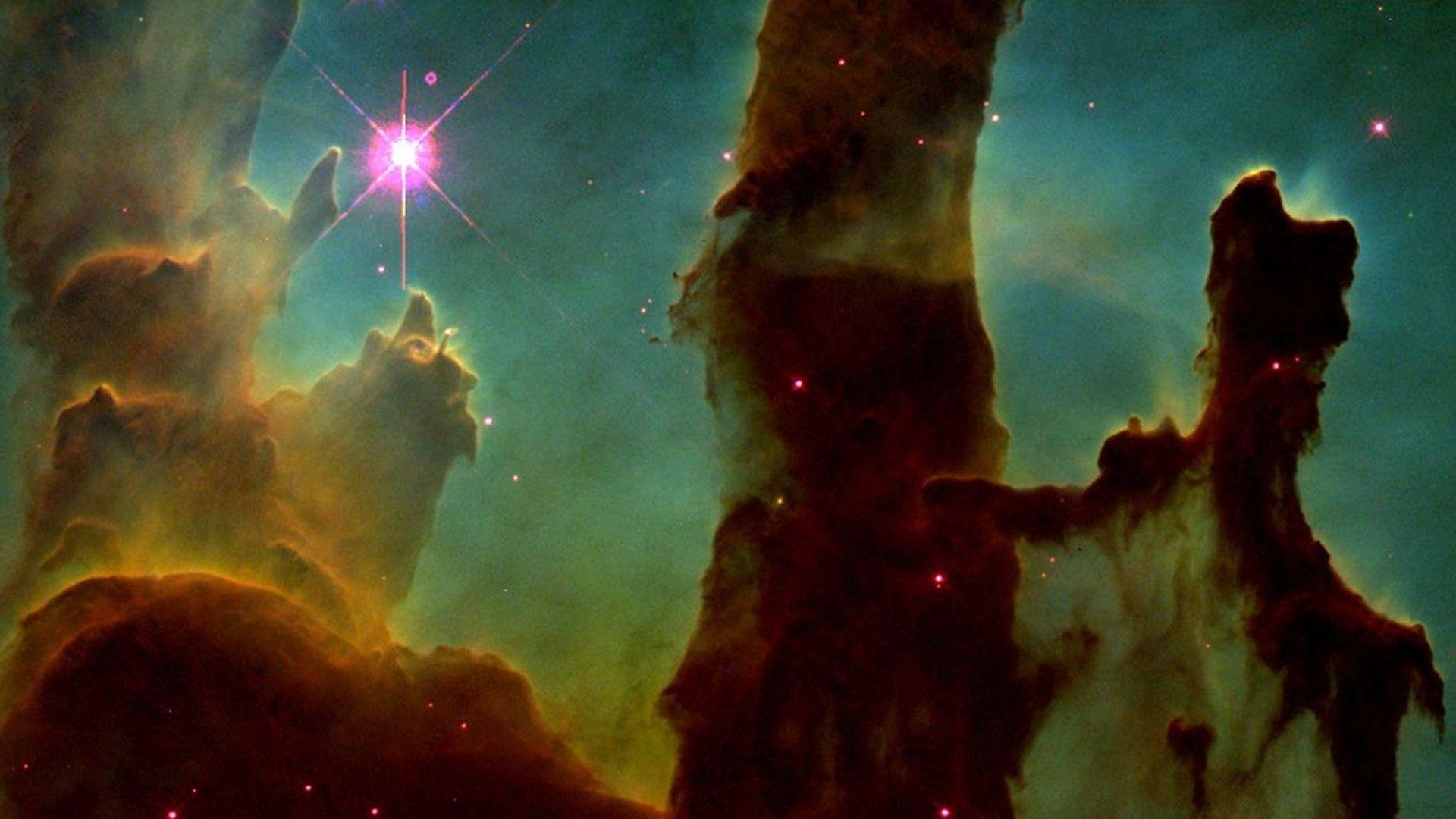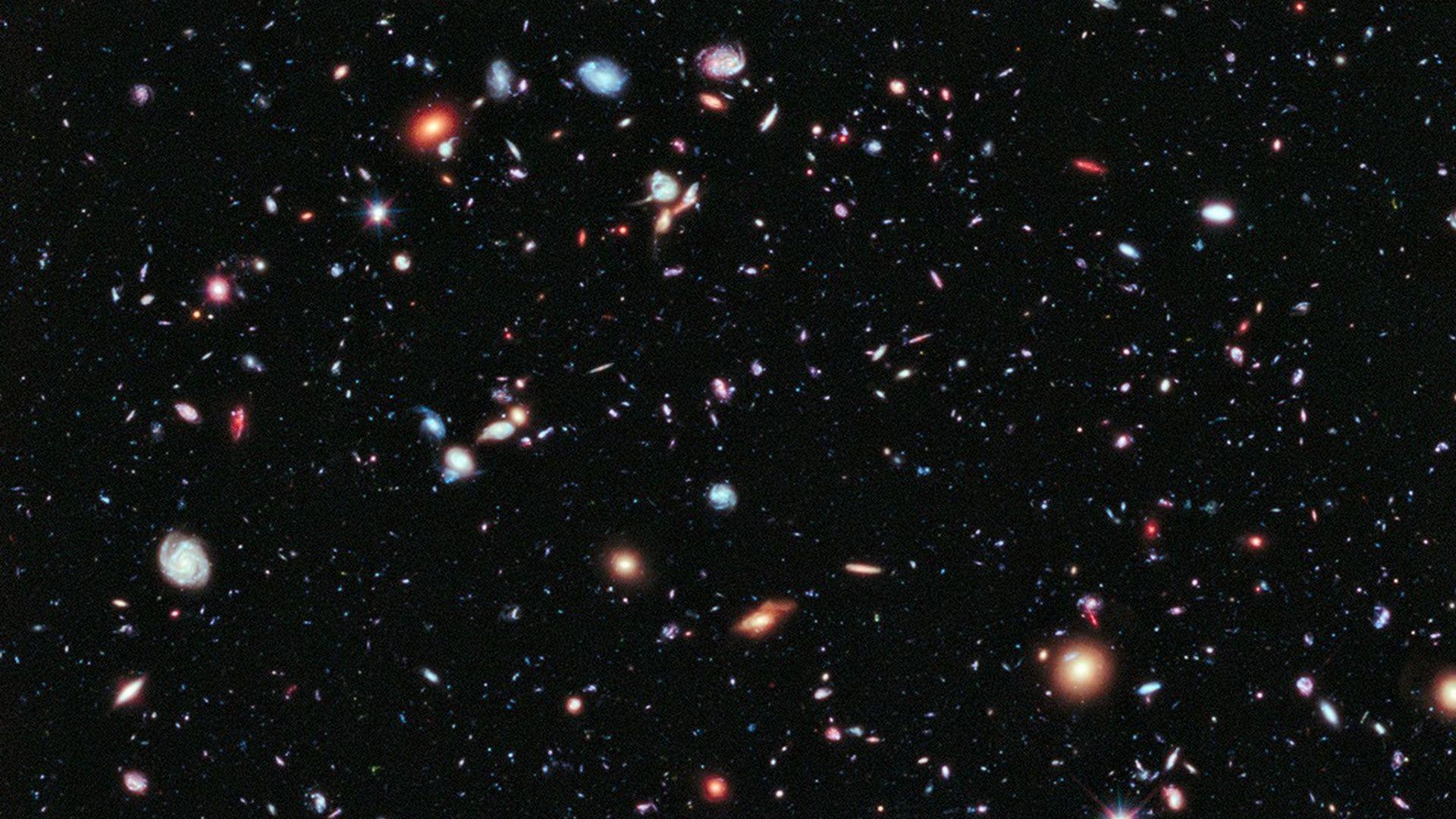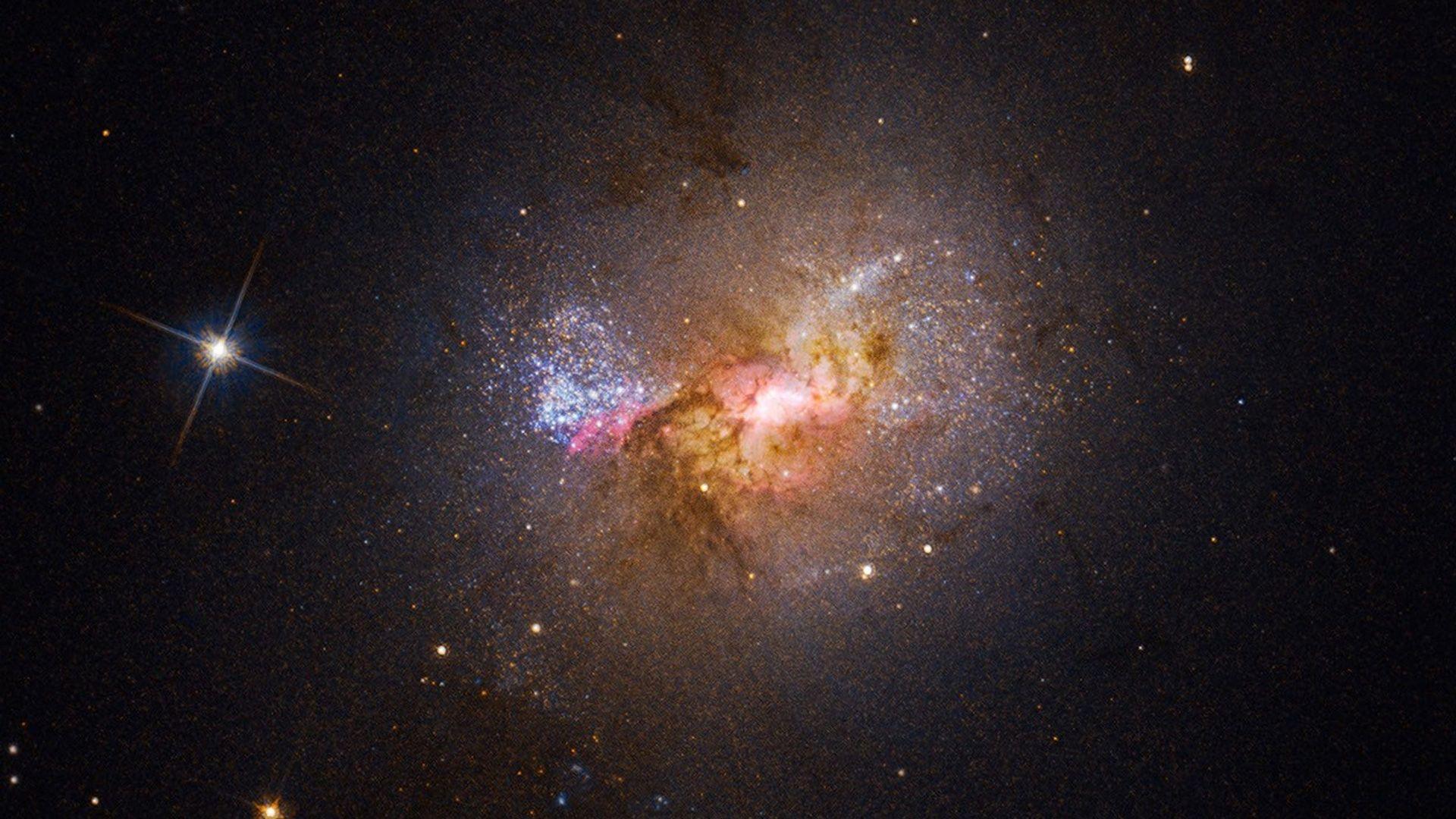Happy 35th birthday, Hubble: Five big discoveries from the space telescope

There are 35 candles on the cake for Nasa's Hubble Space Telescope
- Published
Launching on 24 April 1990, the Hubble Space Telescope has had an out-of-this-world 35 years capturing some of the most amazing images of space.
When it was first launched, Hubble had a tricky start, only sending back blurry images because of a fault with the telescope's mirror.
This was fixed three years later, and Hubble sent back the clearest image of the M100 galaxy yet.
As well as these stunning observations, Hubble has also helped scientists discover more about the universe around us.
Here's some of the biggest findings from Hubble over its 35 years in orbit.
More space stories:
All you need to know about Nasa's new SPHEREx telescope
- Published5 March
Space 2025: What are the big events to look out for?
- Published21 December 2024
Nasa telescope spots 'volcanic' star
- Published24 October 2024
Discovering the universe is 13.8 billion years old

This image of the galaxy NGC 5468 was taken in 2023 to double check the universe's expansion rate, combining data from the Hubble and James Webb Space Telescopes
Findings from Hubble have allowed scientists to understand more about the age of the universe, and how it is 'running away'... but don't panic, this doesn't mean the universe is disappearing.
The space telescope is named after astronomer Edwin Hubble, who discovered that the universe is expanding.
Scientists using the Hubble telescope have wanted to find out more about his theories.
By comparing the brightness of stars in our galaxy with similar objects in faraway galaxies using Hubble, as well as doing clever measurements with other telescopes, scientists found that the rate at which the universe is growing is increasing - which is where the 'runaway' idea comes from.
Three scientists working on this discovery were awarded the 2011 Nobel Prize in Physics for their work.
Using their measurements to work back in time, astronomers date the universe as 13.8 billion years old.
Finding new moons

The tiny yellow circle in this image shows the discovery of S/2004 N 1 - later named Hippocamp, Neptune's fourteenth moon
After Nasa launched Hubble, scientists could see the universe more clearly than ever before, meaning they were able to spot things that might have been missed by previous missions.
In 2003, astronomers discovered two tiny moons orbiting Uranus, which hadn't been spotted by Voyager 2 as it flew past the planet in 1986.
These moons were given the names Cupid and Mab, and are about 12 to 16 km wide.
Hippocamp, the fourteenth moon of Neptune was spotted 10 years later after a scientist analysed Hubble observations of the planet taken over a five year period.
Spotting stars emerge from 'Eggs'

This image was taken in 1995 and is more than 6,500 light years away
No, these aren't the eggs you might have in your kitchen - these 'Eggs' stand for evaporating gaseous globules.
Inside young stars are formed that grow as they gather more mass from their surroundings.
Hubble found these columns of cold dust and gas back in 1995, with one of the tallest pillars more than four light years long.
Learning how galaxies grow

It took 10 years of Hubble to get this amazing observation
Looking into the sky is also looking into the past.
Many of the stars that Hubble has seen are light years away, meaning that we're seeing light that may have taken thousands of years to travel across space to where we can see it.
The deeper into space that Hubble investigates, the further back it looks, allowing it to see distant galaxies from the early universe.
In 2012, scientists put together an eXtreme Deep Field image of the universe with 10 years of Hubble photos, showing galaxies from up to 13.2 billion years in time.
Proving that supermassive black holes are real

The brightness at the centre of this Hubble photograph shows where this galaxy's massive black hole is
Black holes are phenomena in space where the pull of gravity is so strong that even light can't escape from it.
Supermassive black holes are huge versions of this - they're millions to tens of billions of times the mass of our Sun.
Scientists had thought they existed but didn't have any proof for it, until Hubble spotted one in 1994.
The sight of the heart of giant galaxy M87 with Hubble's Faint Object Camera was the first glimpse of a supermassive black hole.
